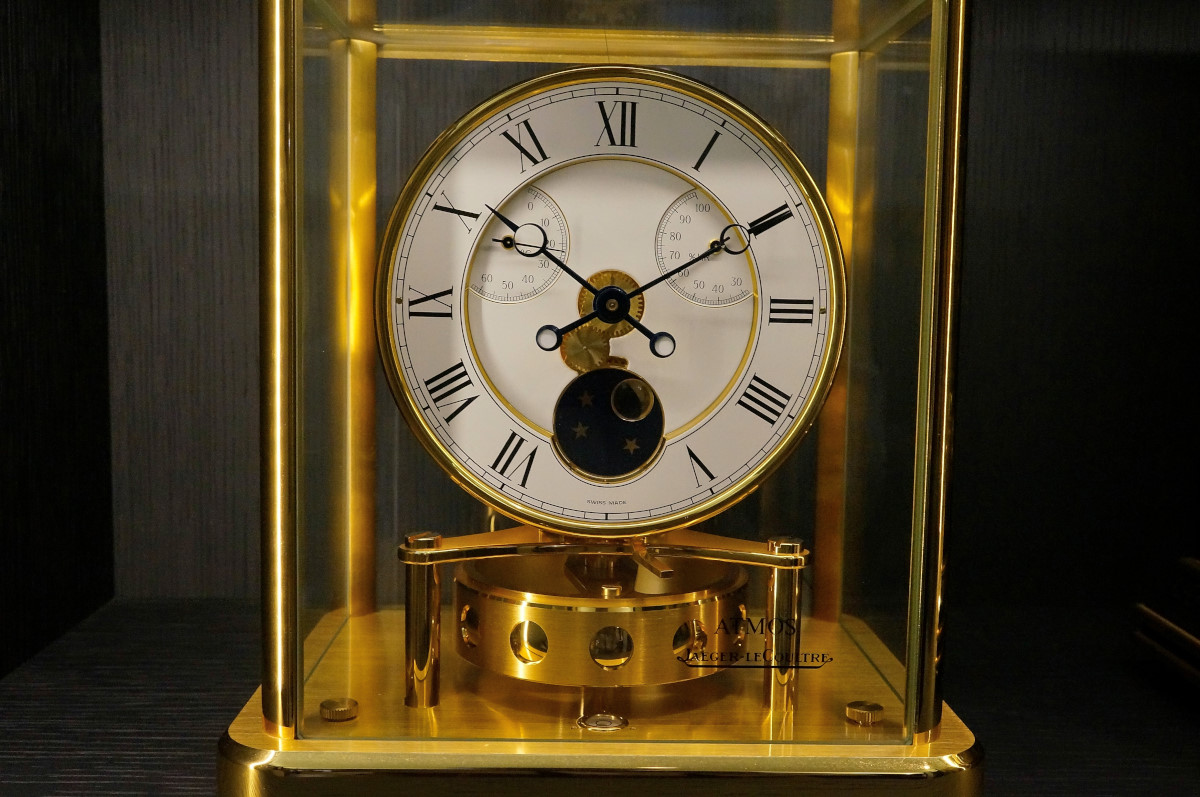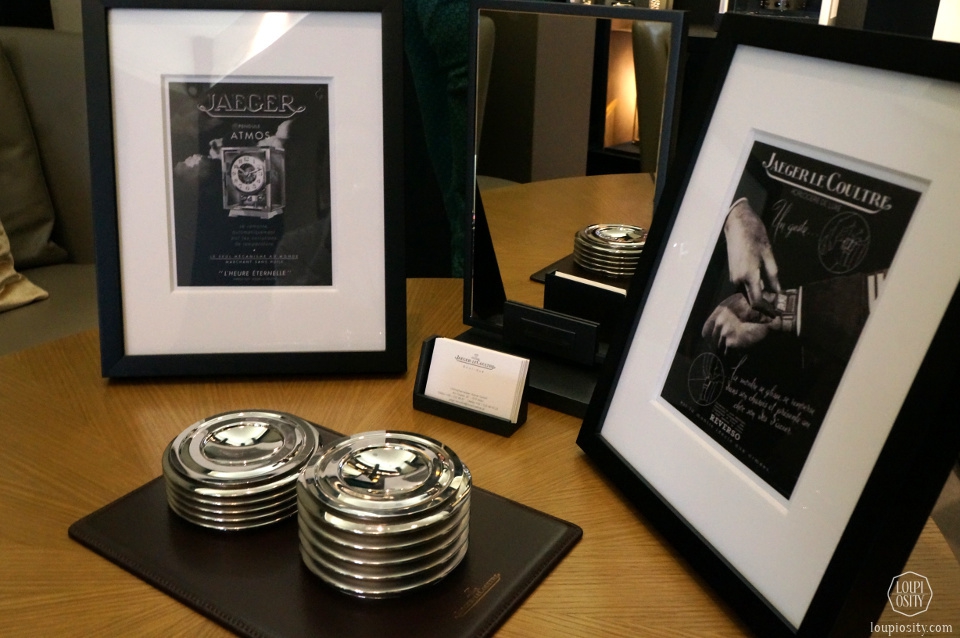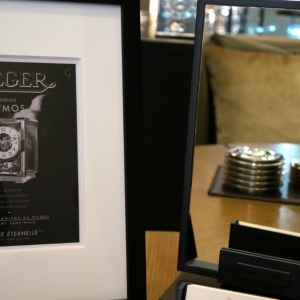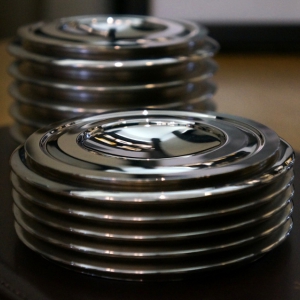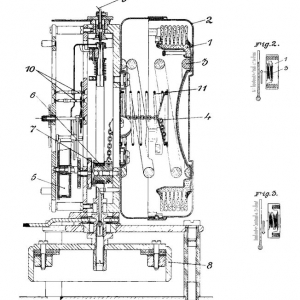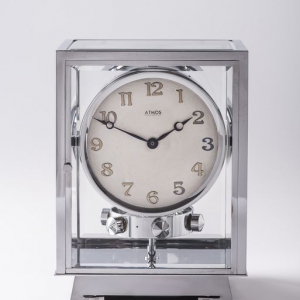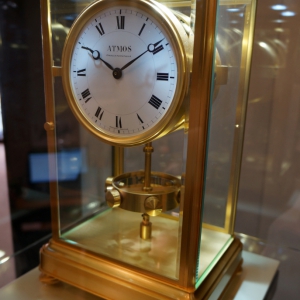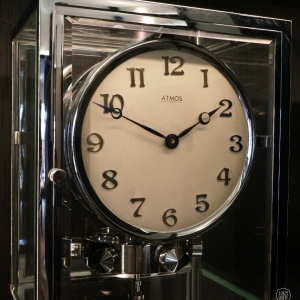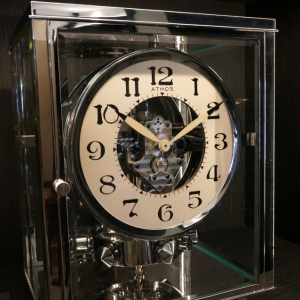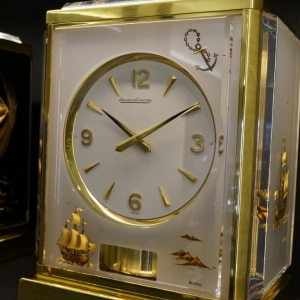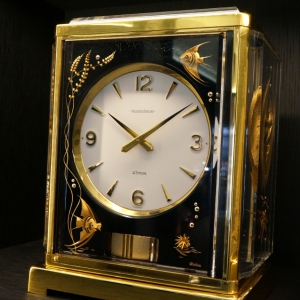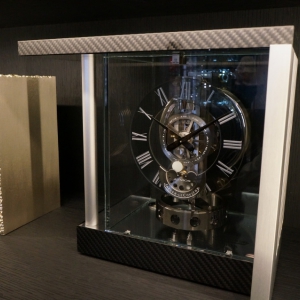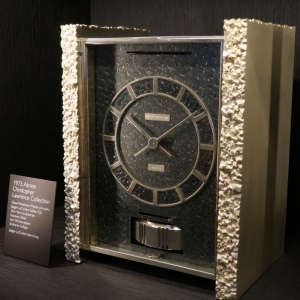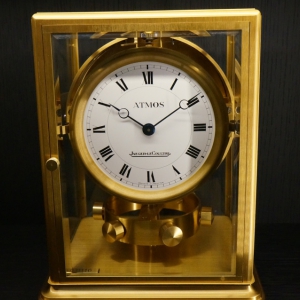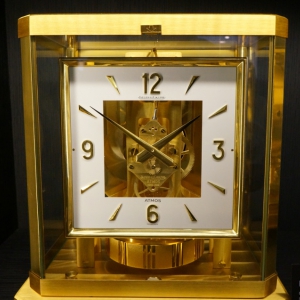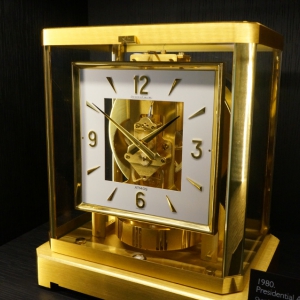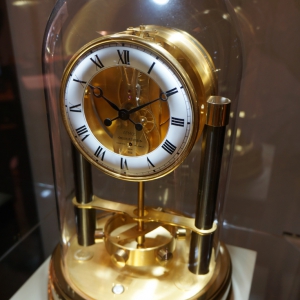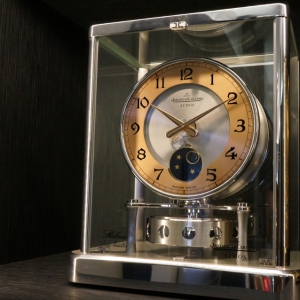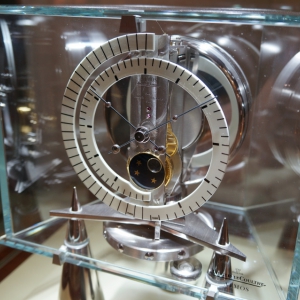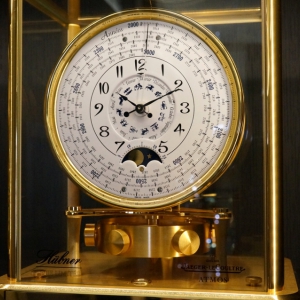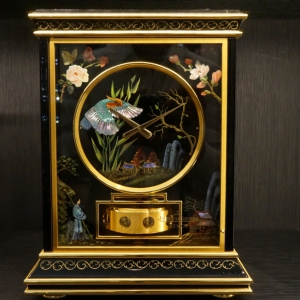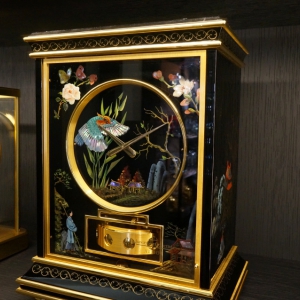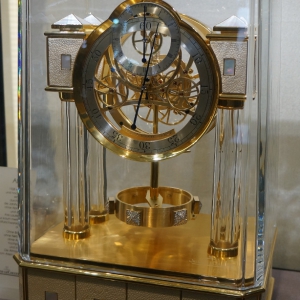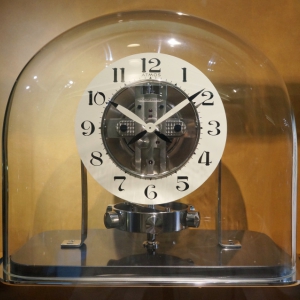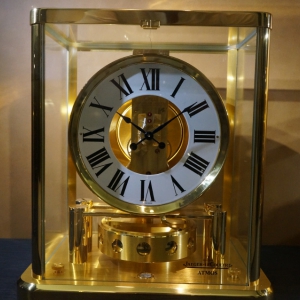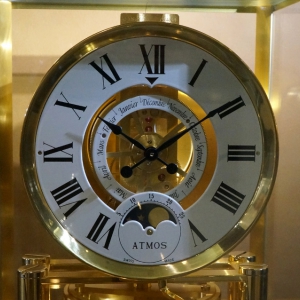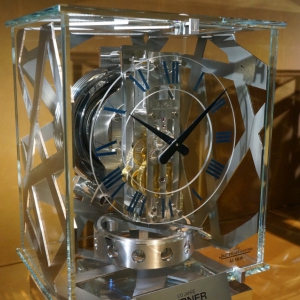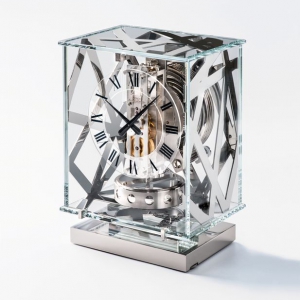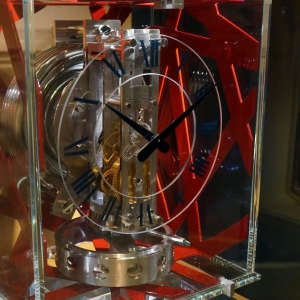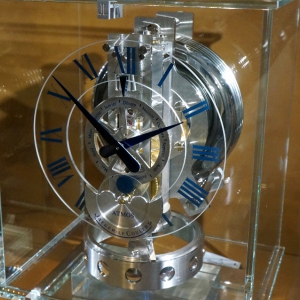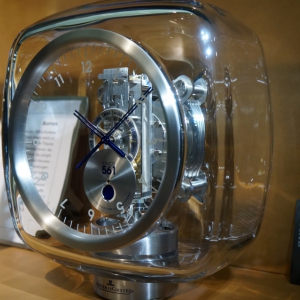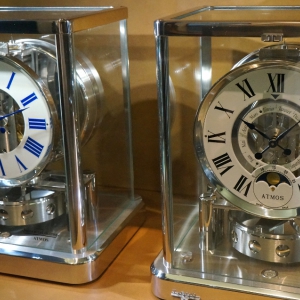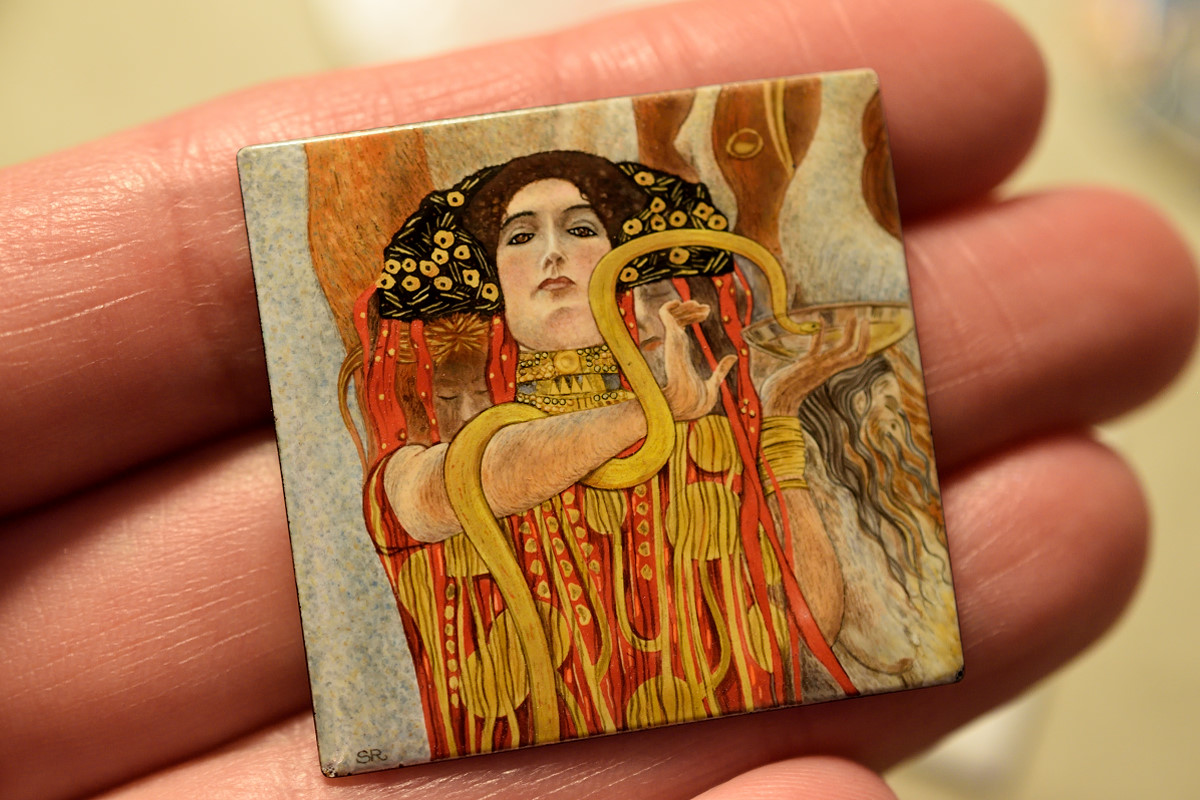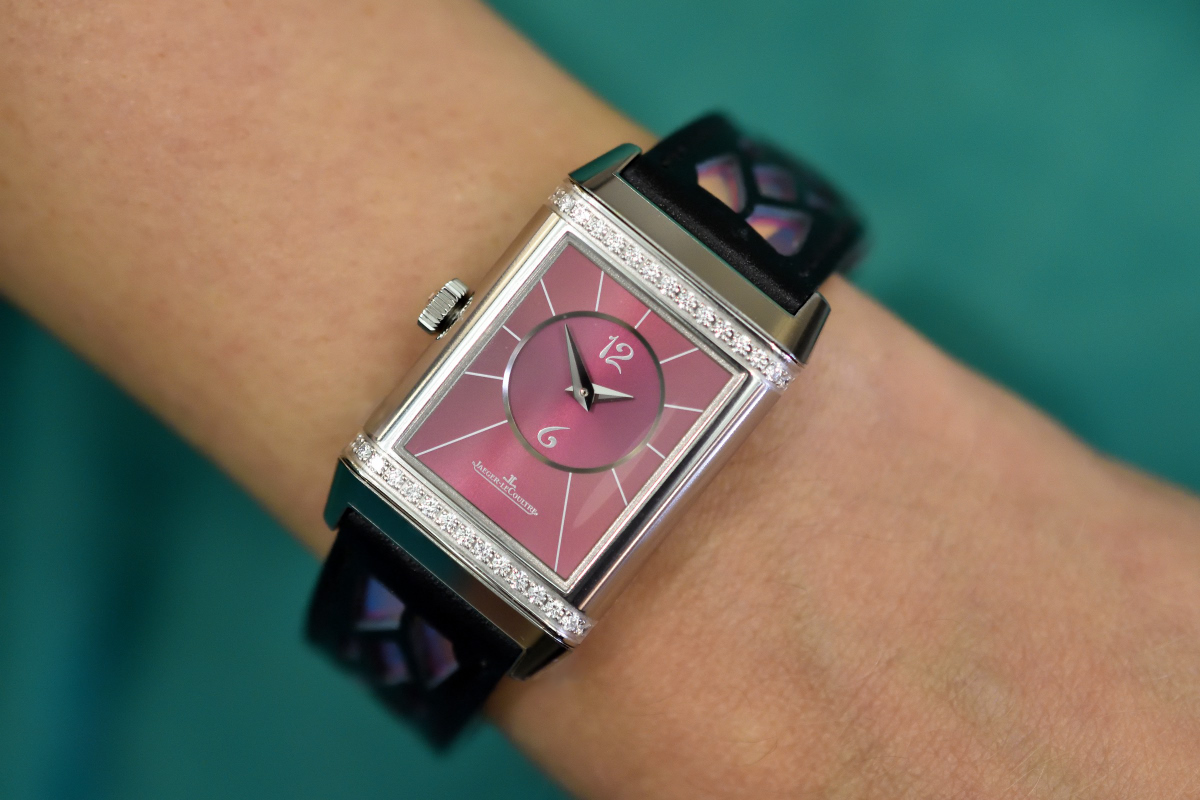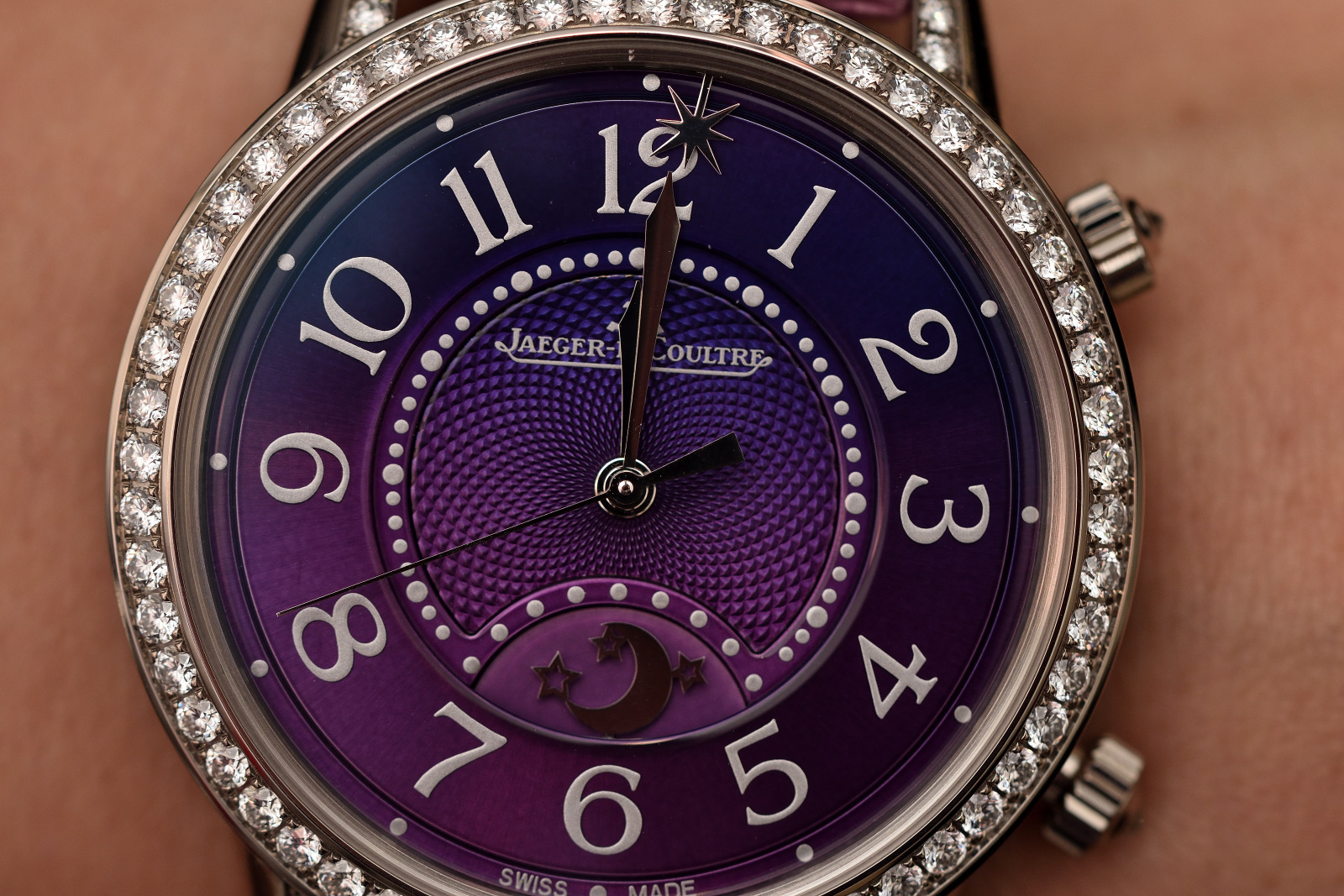I love Vienna – the seat of Habsburgs has been the centre of arts, music and all branches of culture for centuries. I like to walk among the nicely renovated and maintained buildings, have a coffee at the thousand-faced coffee houses of the city and a nice lunch at the Naschmarkt or browse the bookshop of MuseumsQuartier. By immersing oneself in the leisurely mood of Vienna one understands easily why the dwelling has always scored highly in surveys researching the most liveable places of the world. I get completely recharged by the city that holds some of the most astonishing memoires of Secession and gave birth to a virtuoso artist: Gustav Klimt. His mosaic frieze in the interior of the Brussels Stoclet Palace, called The Waiting, inspired Jaeger-LeCoultre to create a limited edition table clock in 2013. It was an Atmos in a beautiful wooden cabinet, adorned by a marquetry made of 1,400 wooden elements of 35 varieties, recalling Klimt’s classic piece.
Atmos clocks are fantastic mechanical wonders, which source energy from the fluctuation of temperature. The mainspring is wound by the movement of an “iron lung”, a hermetically sealed capsule, inside of which a mixture of gaseous and liquid ethyl chloride expands and contracts. 1 degree of change in temperature anywhere between 15-30 C produces sufficient energy to operate the clock for an additional 48 hours.
The first watch working on this principle was created by Cornelis Drebbel in the 17th century. The initial version of the Atmos watch was designed by Jean-Léon Reutter in Neuchâtel, the mechanism of this timepiece sourced energy from the shifts in temperature. The first commercial Atmos 1 model in 1929 used a mercury and ammonia bellows power source. In 1935 Jaeger Le-Coultre took over the production of the Atmos and created a model that used the present ethyl chloride power source.
Obviously, the mechanism has to be highly effective, running with minimal friction, to reduce any waste of energy. By using a torsion pendulum the balance oscillates slowly only twice per minute. This makes it possible for the Atmos to run much longer than ordinary high-frequency watches.
The first time I saw such a piece was in Oman courtesy of a collector who received it as a presidential gift – I was amazed by the hypnotic power of this clock, especially the slowly turning pendulum. Even more as a wristwatch, Atmos clocks are status symbols that cannot be worn and will only adorn your home or office. And as such, it has been the present of the Swiss Federal Government to eminent guests for decades.
Last week I read a tweet from Jaeger-LeCoultre about an Atmos exhibition organized at their boutique in Vienna operated by Hübner. I drove to Vienna for a few relaxing days and of course to see this line up of Atmos clocks, which included historic pieces, such as an 1932 Atmos 1 model, and more modern ones with straight lines, like the carbon moon-phase with date indicator.
The exhibition is displayed until 16 August, I sincerely encourage you to stop by at the Jaeger-LeCoultre boutique, and let yourself be immersed in the friendly atmosphere of Hübner.
Photo credits: Jaeger-LeCoultre, Loupiosity.com.
All registered trademarks are property of their respective owners.
All rights reserved.

